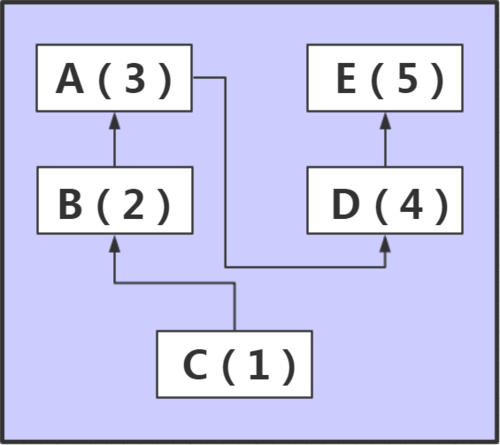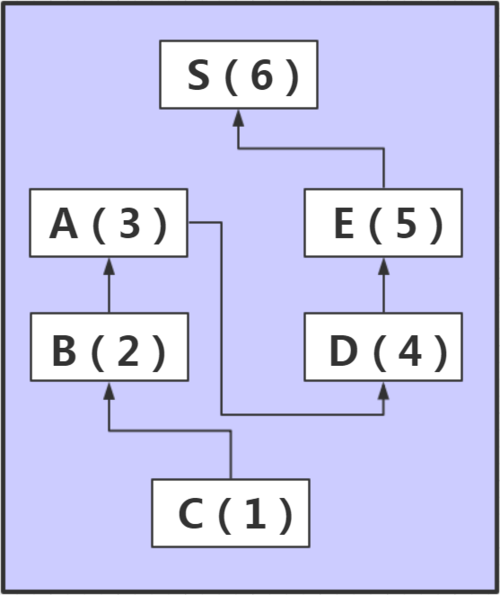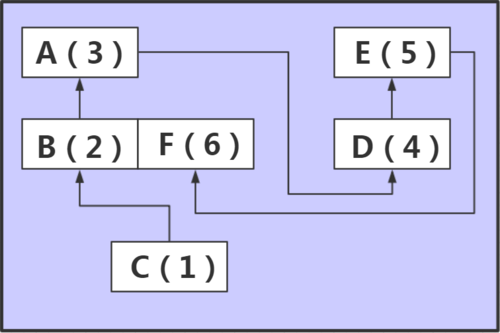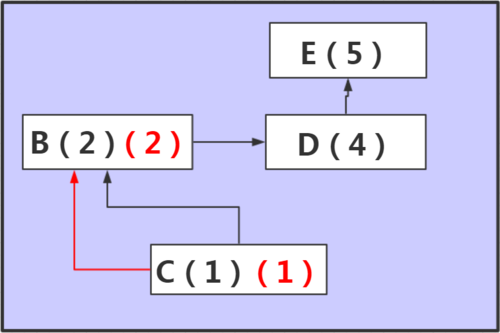一、什么是继承
继承是一种创建类的方法,在python中,一个类可以继承来自一个或多个父。原始类称为基类或超类。
#创建父类class Parent1: passclass Parent2: pass# 继承父类,单继承class Obj1(Parent1): pass#继承父类,多继承class Obj2(Parent1,Parent2): pass
二、什么时候使用继承
在已经创建的几个类中,这几哥类中的方法和变量有相同的,这种时候我们就可以使用类的继承,将其它类中已有的方法和变量通过继承的方式,在新创建的类中,使用正常的方式就可以调用父类中的方法。剩下自己特有的方法只要在自己类中定义就可以。
举个列子:人都会吃,喝,玩,小明也是一个人,所以小明也会,所以小明继承了人的属性,特别的是小明还会背古诗,就基于以上的说法写一个类的继承。
class Man: def eat(self): print('吃') def drink(self): print('喝') def play(self): print('玩')class XiaoMing(Man): def recite(self): print('背古诗')
xm = XiaoMing()
xm.eat()
xm.recite()
输出结果:
吃
背古诗三、单继承与多继承
单继承:仅仅继承一个父类,当查找方法的时候,首先在自己里面查找,然后到父类里面查找。
class Biology: def split(self): print(self.name+" accrue")class Animal(Biology):#在类后面加括号加上所要继承类的名字,继承的是类的方法
def GoWhoring(self): print("i like go whoring") def eat(self): print(self.name+" eat")class superman: def gamble(self): print("gamble is interesting") def GoWhoring(self): print("beautiful whoring")
class Cat(Animal): def GoWhoring(self): print("i don't like go whoring") def __init__(self,name):
self.name = name def cry(self): print(self.name + " 喵") #优先级:自己,父类(左边,右边)class Dog(Animal,superman):#在继承多个父类时,在两个父类都有同一个名字的方法时,优先选择括号左边的父类的方法
def __init__(self,name):
self.name = name def cry(self): print(self.name + " 汪")
mimi = Cat("mimi")
mimi.eat()
mimi.cry() #当基类里方法存在,派生类里也存在同名方法,优先找派生类里的方法mimi.GoWhoring() #当父类里有一个方法自己也有一个同名的方法时,默认使用自己的方法husike = Dog("erha")#虽然Dog里没有eat和split但是由于Dog继承了Animal和的方法,而Animal继承了Biology的方法husike.eat() #所以Dog可以使用Biology的方法 husike.cry() #父类有一个名字叫"基类" 子类有一个名字叫"派生类"husike.split()
husike.GoWhoring()
faker = Animal()
faker.GoWhoring()#优先使用自己的方法派生类可以继承基类里的所有功能。
当基类里方法存在,派生类里也存在同名方法,派生类优先找派生类里的方法(意思是优先找自己的)。
在Java、C#里面一个子类只能继承一个父类,多了报错,但是在python里可以继承多个父类
在经典类中,继承是以深度优先,在新式类中,继承是以广度优先。
Python 2.x中默认都是经典类,只有显式继承了object才是新式类。
python 3.x中默认都是新式类,经典类被移除,不必显式的继承object。
深度优先:
class A(): def save(self): print("This is from A")class B(A): passclass C(A): def save(self): print("This is from C")class D(B,C): passfun = D()
fun.save()
输出结果:
This is from A"
深度优先的时候就是一条道走到黑,从左向右找,先把左边的一个里面的全部找完在找右边的。
广度优先:
class A(): def save(self): print("This is from A")class B(A): passclass C(A): def save(self): print("This is from C")class D(B,C): passfun = D()
fun.save()
输出结果:
This is from C
首先在左边的上一层父类中寻找,如果没有就到右边一个父类中寻找,没有就到左边父类的父类中寻找。
广度优先多种情况解析
情况一
有A、B、C、D、E几个类,A为B的父类,B为C的父类,E为D的父类,D为C的父类 现在C需要使用一个方法,只有在A,E里有,第一次C先去B中寻找没有找到 然后就会去A里面找,A里没有就去D里面找,然后再去E里找。
class A: def function(self): print("are you OK?A")class B(A): def function_fake(self): print("are you OK?B")class E: def function(self): print("are you OK?E")class D(E): def function_fake(self): print("are you OK?D")class C(B, D): def Sb(self): print("i am sb")
faker = C()
faker.function()
输出结果:
are you OK?A括号里为查找顺序。
情况二
它会先把没有共同的父类寻找玩,然后再找共同的父类,因为在这种情况下它想找到和自己关系最近的。
class S: def function(self): print('are you Ok?S')class A(S): def function_fake(self): print("are you OK?A")class B(A): def function_fake(self): print("are you OK?B")class E(S): def function(self): print("are you OK?E")class D(E): def function_fake(self): print("are you OK?D")class C(B, D): def Sb(self): print("i am sb")
faker = C()
faker.function()
输出结果:
are you OK?E
情况三
当A、B、D、E、都没有C所要找的函数时才会找右边的F(括号右边)
class F(): def function(self): print("are you OK?F")class A: def function_fake(self): print("are you OK?A")class E: def function_fake(self): print("are you OK?E")class B(A,F): def function_fake(self): print("are you OK?B")class D(E): def function_fake(self): print("are you OK?D")class C(B, D): def Sb(self): print("i am sb")
faker = C()
faker.function()
输出结果:
are you OK?F情况四
首先面执行一个 c1 = C();c1.xxx() ,xxx在D里面而且xxx又执行了self.ooo() 而ooo在BDE里都有它会执行哪个?
class B: def ooo(self): print("B")class E: def ooo(self): print("E")class D(E): def xxx(self):
self.ooo() def ooo(self): print("D")class C(B, D): passc1 = C()
c1.xxx()
输出结果:
B解析:首先找到c1.xxx在D里面,在D里面又执行了self.ooo(),这个self代指c1,而c1为C类的对象,意思还是c1.ooo,所以寻找ooo时还是从C开始,因为先找左边的所以,找到了B的ooo 以后找是谁执行的函数要看准self到底是谁的从self下手。
红色为第二次寻找路径(寻找ooo方法的次序)
今天的类的继承主要是多继承的时候父类中方法选择的。
原文出处:http://www.cnblogs.com/liudi2017/p/9297336.html
共同学习,写下你的评论
评论加载中...
作者其他优质文章










